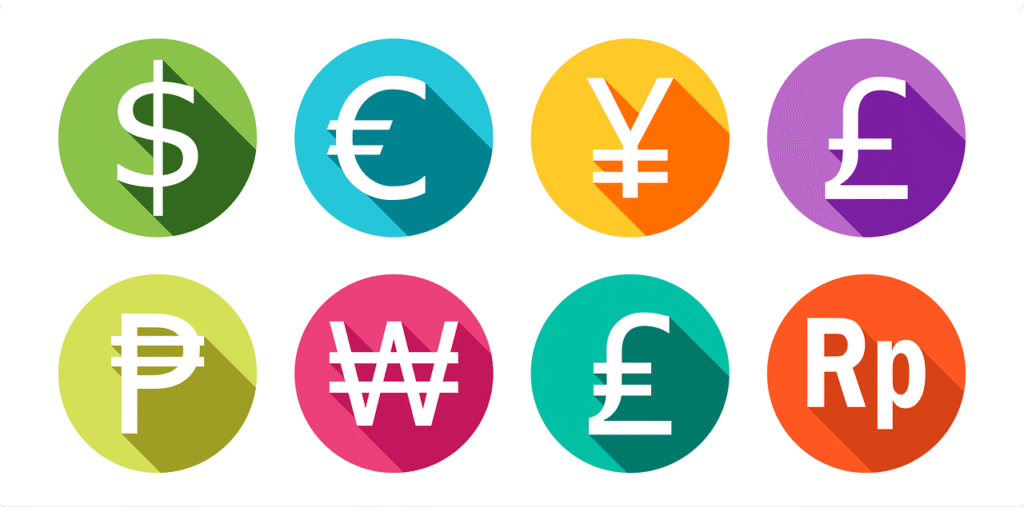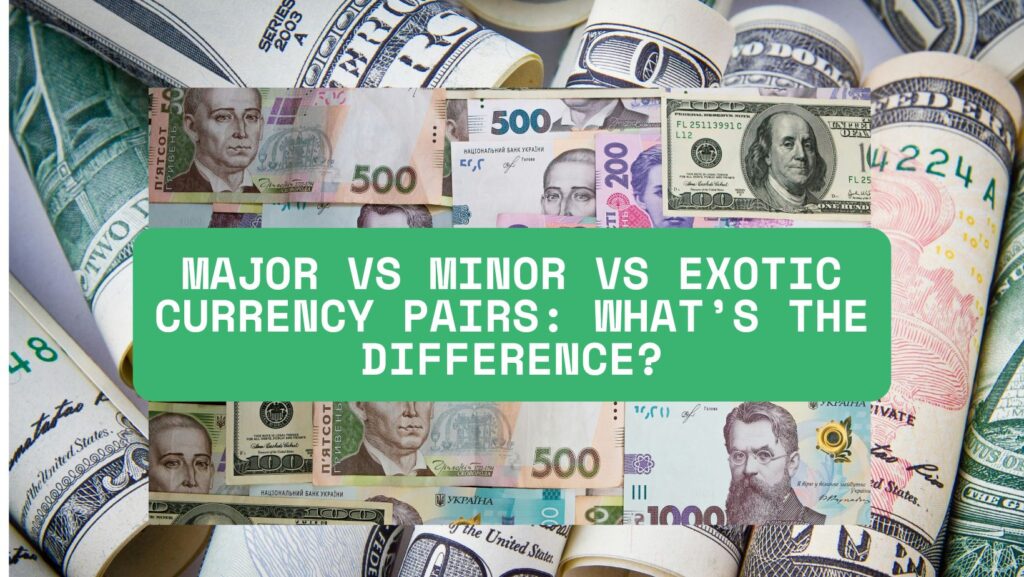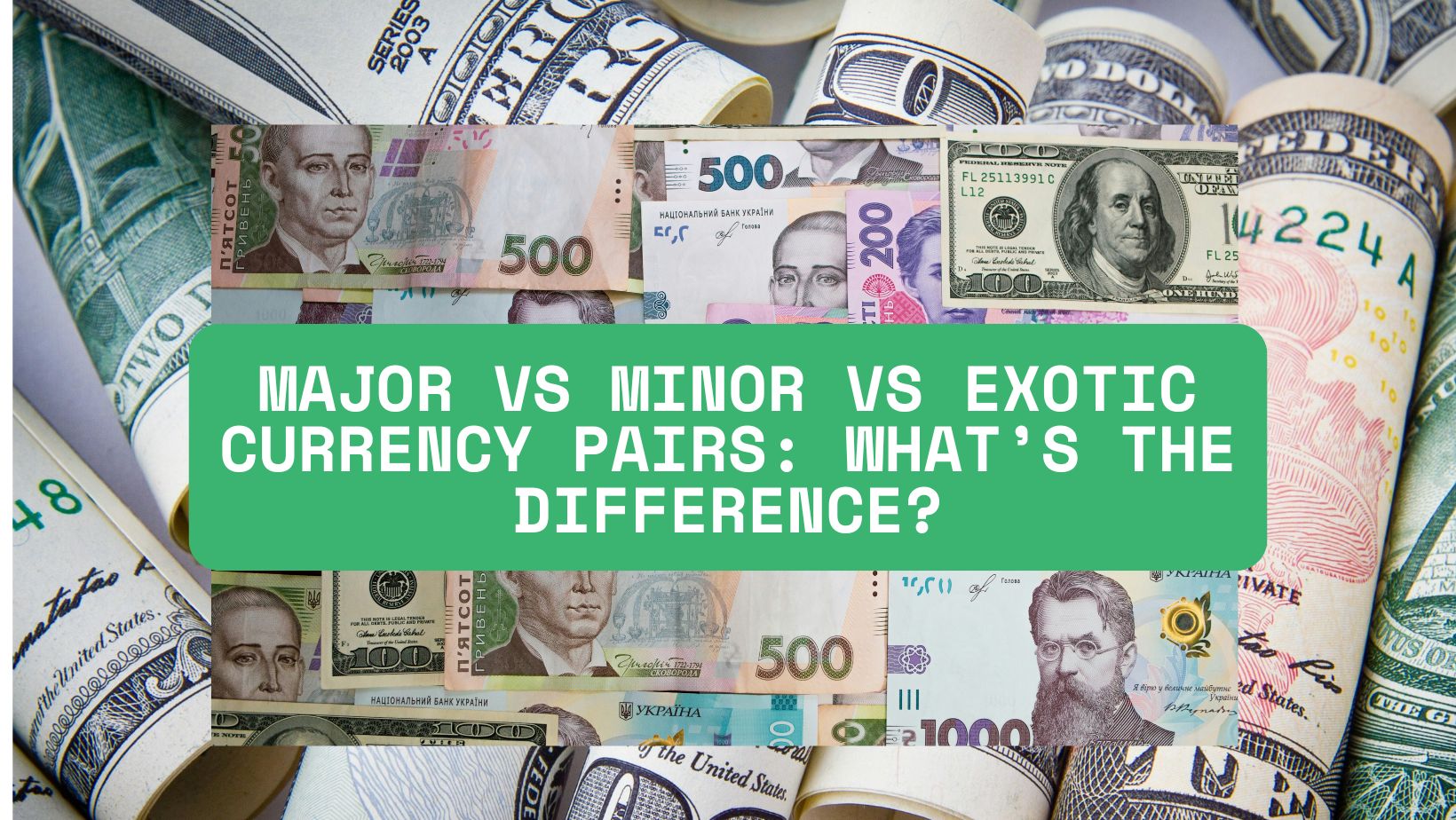Forex trading is the world’s largest financial market, with trillions of dollars exchanged every day. But if you’re a beginner, the first thing you need to understand is what currency pairs are and which category of them – Major, Minor or Exotic – is best for you.

In this blog, we’ll take a closer look:
- What are currency pairs?
- What’s the difference between Major, Minor and Exotic currency pairs?
- Which pairs are most traded?
- Which pair is best for which type of trader?
💡 What are currency pairs?
In the Forex market, trading is done in pairs – in which you buy one currency and sell another.
Example:
If you’re trading EUR/USD, this means:
You’re buying Euros.
And you’re selling US Dollars.
This pair is important because currencies never trade alone – they always trade in pairs.
🔍 Major currency pairs
💰 Definition:
Major currency pairs are those that always include the US dollar (USD) and other currencies from strong economies, such as the euro, yen, pound, etc.
🔝 Most popular major pairs:
EUR/USD – Euro vs. US dollar
GBP/USD – British pound vs. US dollar
USD/JPY – US dollar vs. Japanese yen
USD/CHF – US dollar vs. Swiss franc
USD/CAD – US dollar vs. Canadian dollar
AUD/USD – Australian dollar vs. US dollar
NZD/USD – New Zealand dollar vs. US dollar
📈 Major pairs features:
High liquidity: Most people trade these pairs
Low spreads: Broker fees (spreads) are very low.
News sensitivity: These pairs are very affected by economic news.
Stable behavior: Their volatility is predictable, a good option for beginners
✅ Who is it suitable for?
Beginners and Intermediate Traders
Those who want to track daily price movements
Those who want low trading costs
🧾Minor Currency Pairs
💰 Definition:
Minor currency pairs are those that do not include the USD, but do include pairs of other major currencies. They are also known as cross currency pairs.
🔝 Common Minor pairs:
EUR/GBP – Euro vs. Pound
EUR/JPY – Euro vs. Japanese Yen
GBP/JPY – Pound vs. Japanese Yen
AUD/JPY – Australian Dollar vs. Japanese Yen
CHF/JPY – Swiss Franc vs. Japanese Yen
📈 Characteristics of Minor pairs:
Medium liquidity: There are slightly fewer transactions compared to majors
Wide spreads: Prices can be slightly higher
Volatile nature: Can sometimes produce strong movements, which is useful for scalpers.
Cross-economy movements: The movement of these pairs depends on economic data from both countries.
✅ Who is it for?
- Experienced traders
- Diversification seekers
- Those who need more volatility than major pairs
🌍 Exotic Currency Pairs
💰 Definition:
Foreign pairs consist of one currency from an emerging economy (such as India, Brazil, South Africa) and another currency from another major economy (usually USD).
Exotic Pairs:
USD/ZAR – US Dollar vs South African Rand
USD/THB – US Dollar vs Thai Baht
📈 Pairs characteristics:
Low liquidity: Very few people trade these pairs.
High spreads: Trading costs are high
High volatility: News, politics, and inflation have a strong influence
Unpredictable trends: Technical analysis never works
✅ Who is it for?
- Advanced and Institutional Traders
- Those who have a good understanding of geopolitical events
- Those who enjoy high-risk, high-reward trading
⚖️ Comparison Table
| Feature | Major | Minor | Exotic |
|---|---|---|---|
| Liquidity | High | Medium | Low |
| Spread | Low | Medium | High |
| Volatility | Medium | High | Very High |
| Suitable For | Beginners | Intermediate | Advanced |
| Risk Level | Low | Medium | High |

🤔 Major, Minor or Exotic – What to Choose?
If you are a beginner, start with major pairs. These pairs are stable and give you time to understand the trading platform and price movements.
If you have some experience, try minor pairs, which have a little more volatility and profit potential.
If you have the skills, basic knowledge, and are willing to take risks, forex pairs may be right for you – but they have a much lower margin of error.
So if you liked this blog then follow and share www.growthlikej.com for similar informative knowledge blogs.

